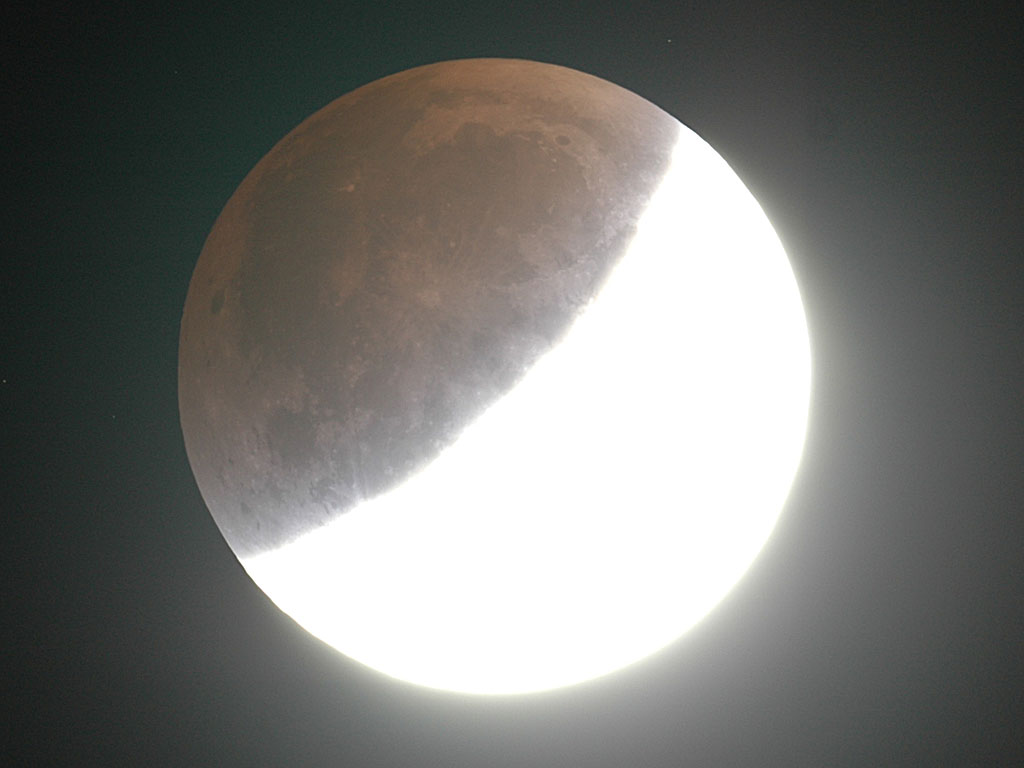
Moon Images: Eclipses + Wacky & Weird
This page presents a few lunar images, some of them "normal" and some of them pretty strange.

September 28, 2007 at ~2:20 a.m.: Halfway into the Earth's shadow.
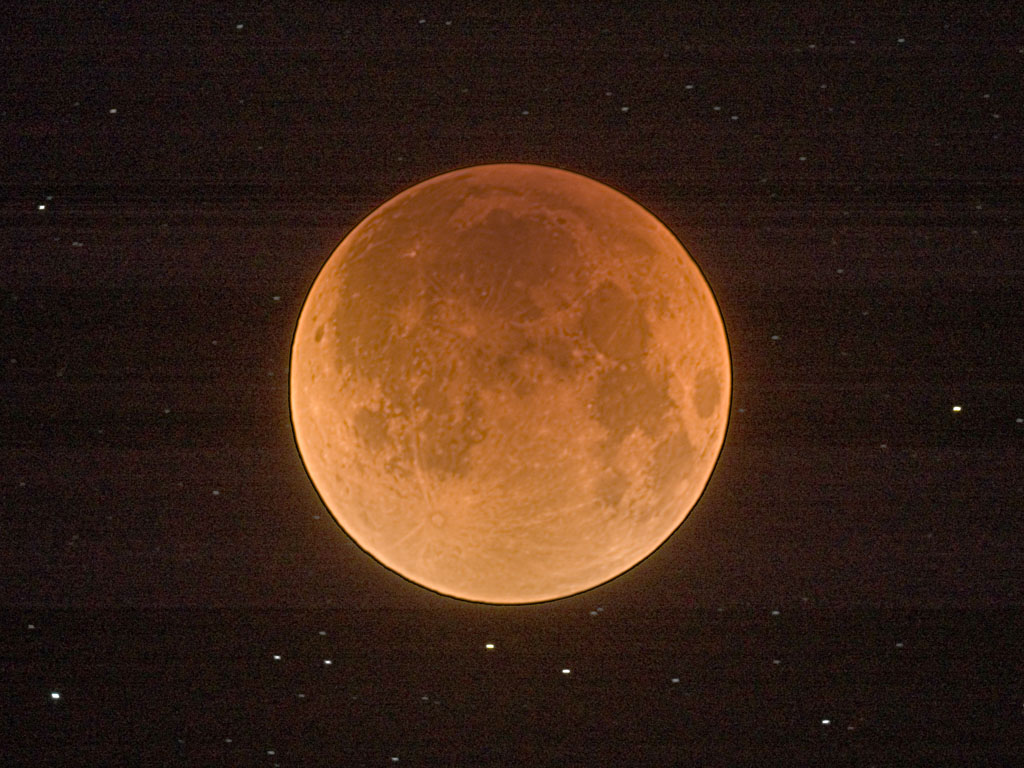
September
28, 2007 at ~3:40 a.m.: Copper-colored Moon with starry
background.
Nikon D70 camera, ISO 200, 30 second exposure. During the
exposure,
the telescope was tracking the Moon, so the background stars are
trailed.
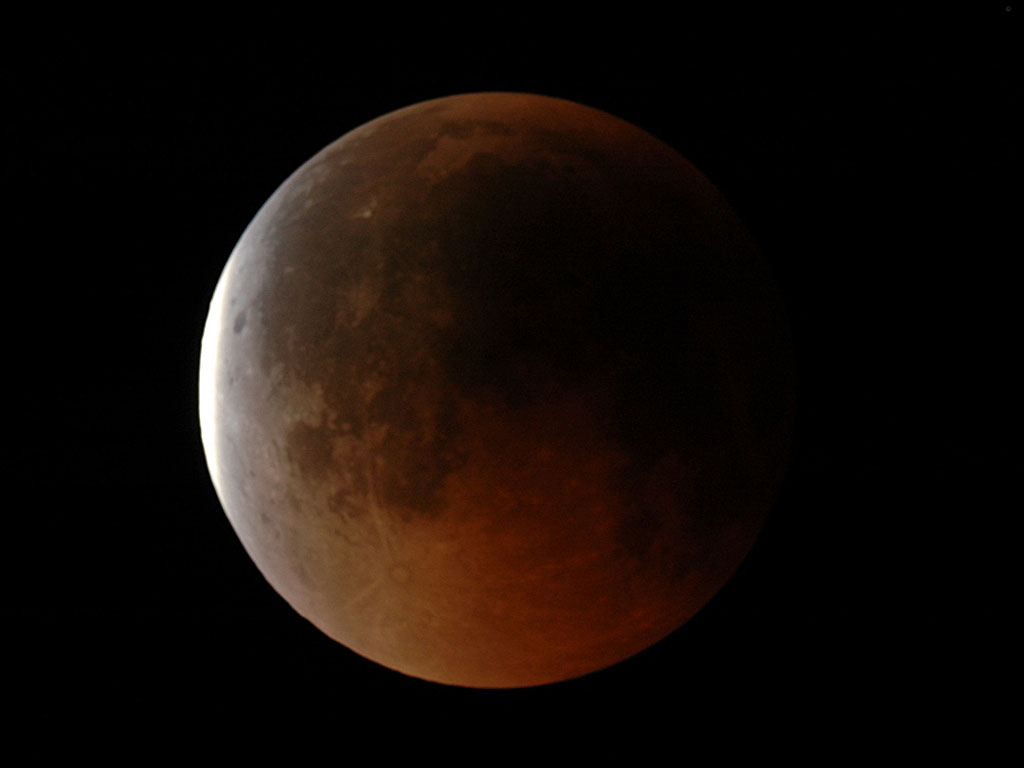
September
28, 2007 at ~4:25 a.m.: Just after the end of totality.
Eclipse images made at Alpaca Meadows Observatory in Oregon.
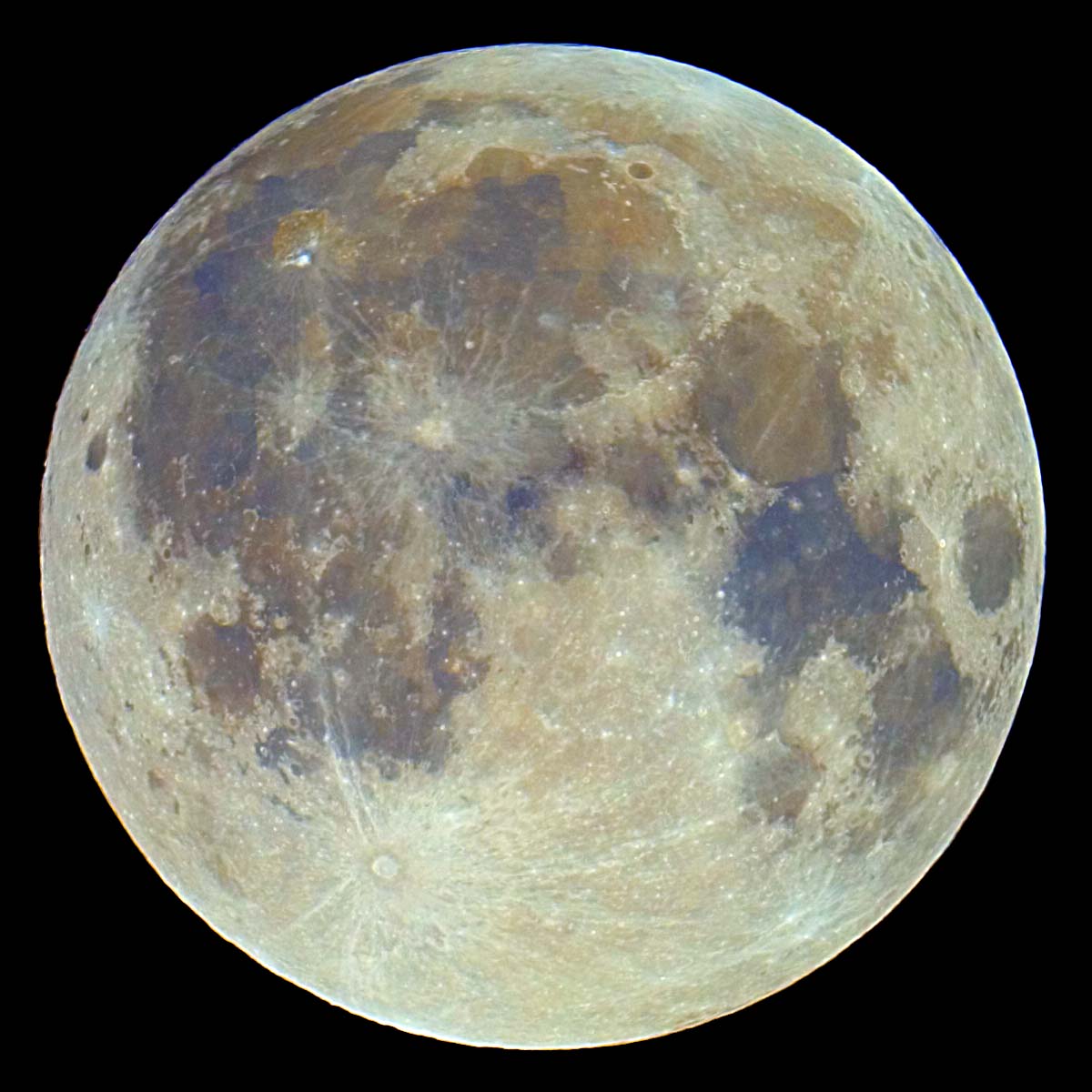
September 28, 2007 just after midnight. This picture began as an ordinary color picture of the Full Moon, but then I increased the saturation of the image to enhance variations in the color of the lunar surface. Fresh mare lavas appear blue relative to the ruddy tones of older mare lavas and the yellow-white of the highlands. Only when the Moon is in eclipse does sunlight illuminate the entire disk of the Moon uniformly. At all other times, a shadow terminator exists somewhere on the lunar limb and different parts of the lunar disk are lit differently.

Do you remember the very first time you saw the Moon through a telescope? I made this image in attempt to re-create the visual paradox that I remember: a surface glowing with a pure silvery light, smooth and silky in appearance yet rough with mountains and craters.
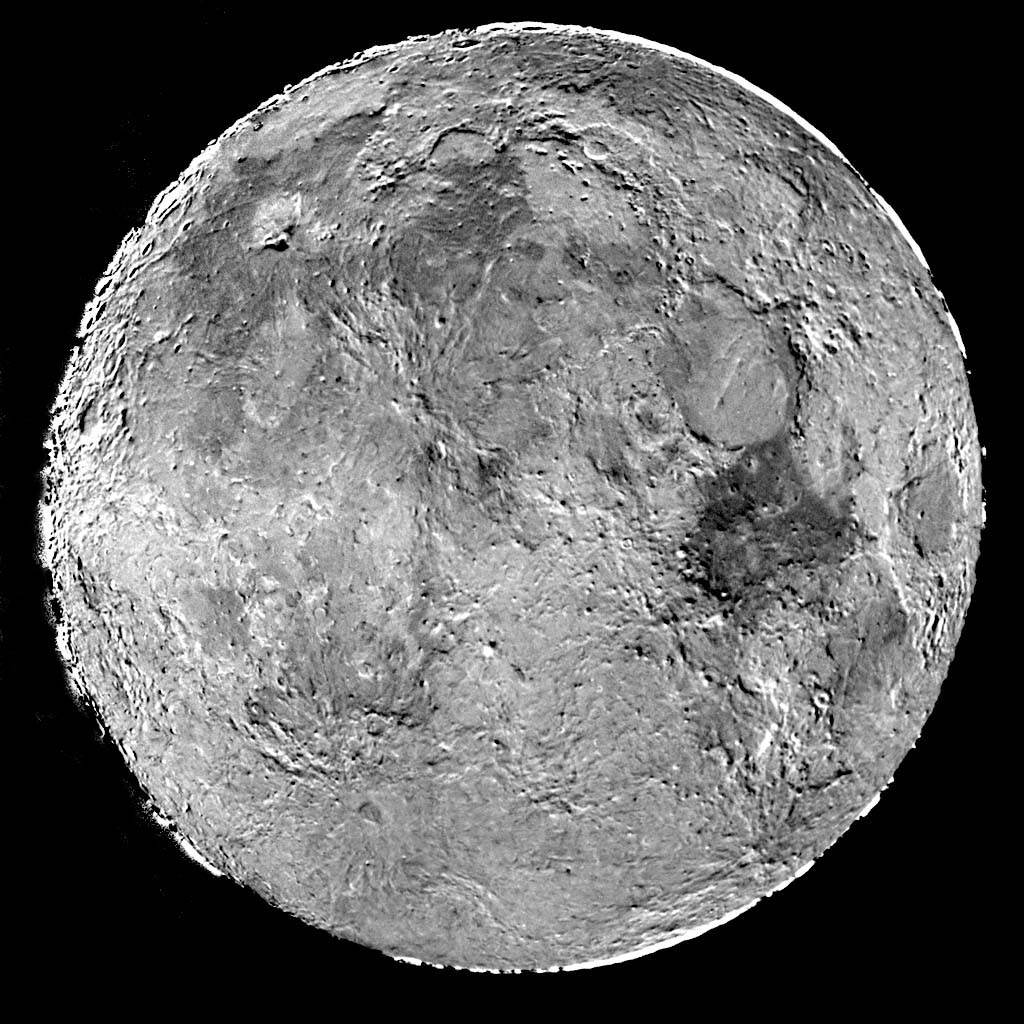
This wacky lunar image requires some explanation. Every observer has seen nights when the atmosphere is almost violently unstable. Stars twinkle like crazy, and if you look at the Moon, it looks like it's at the bottom of a swimming pool. Different parts of the images are wobbling in different directions all at the same time. This image was taken on such a night. I was shooting through different filters hoping to make an enhanced-color image of the Moon like the one above. When I tried to combine the images, I found they just didn't fit each other because features across the Moon were moving around. The atmospheric distortions aren't all that large a few seconds of arc but they are enough the create the bas-relief effects that you see above. Because this image was made with red- and blue-filtered images, the grayscale tones also reflect actual color variations in the lunar surface.
--Richard Berry
Return to Richard Berry's Home Page